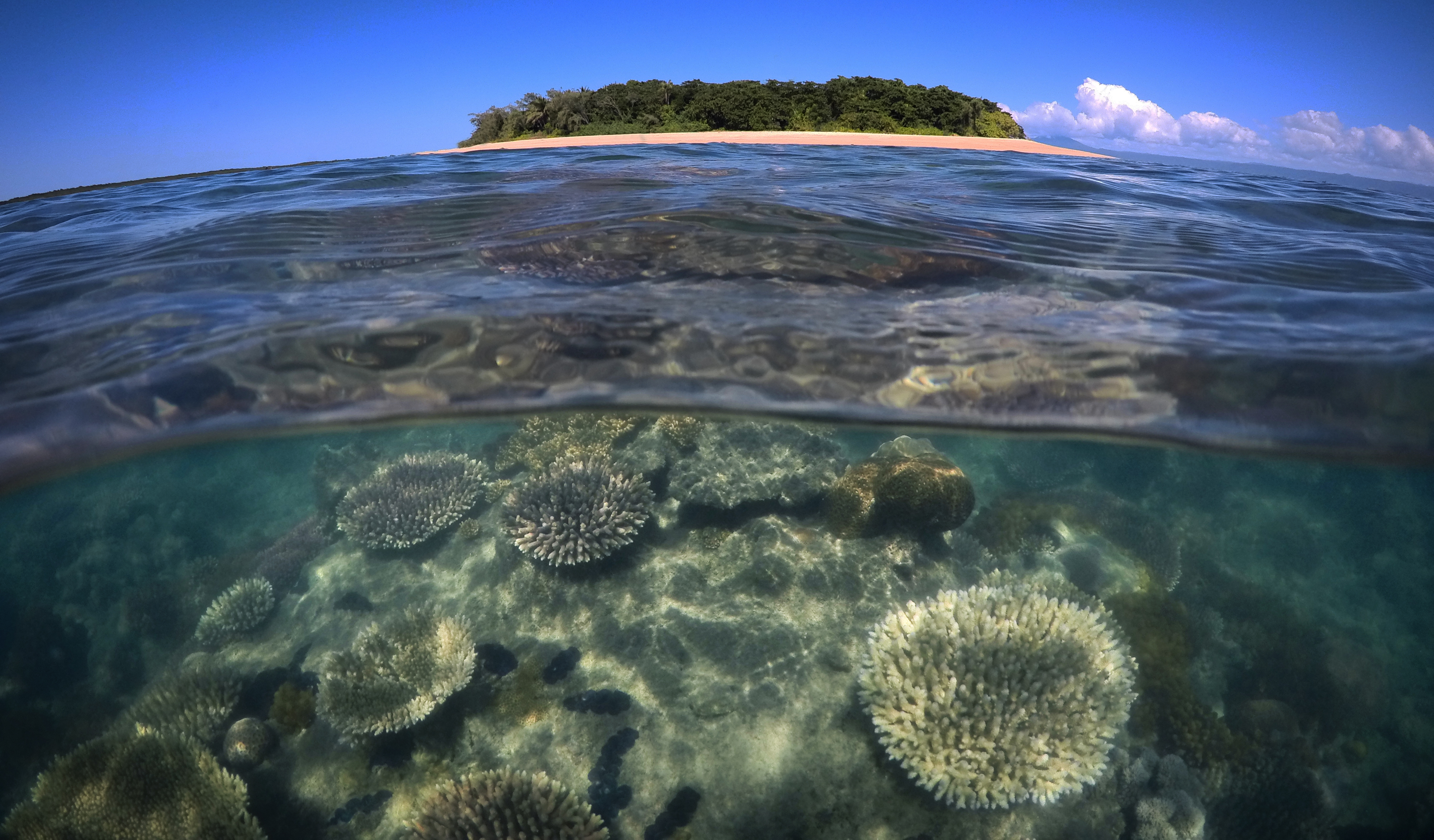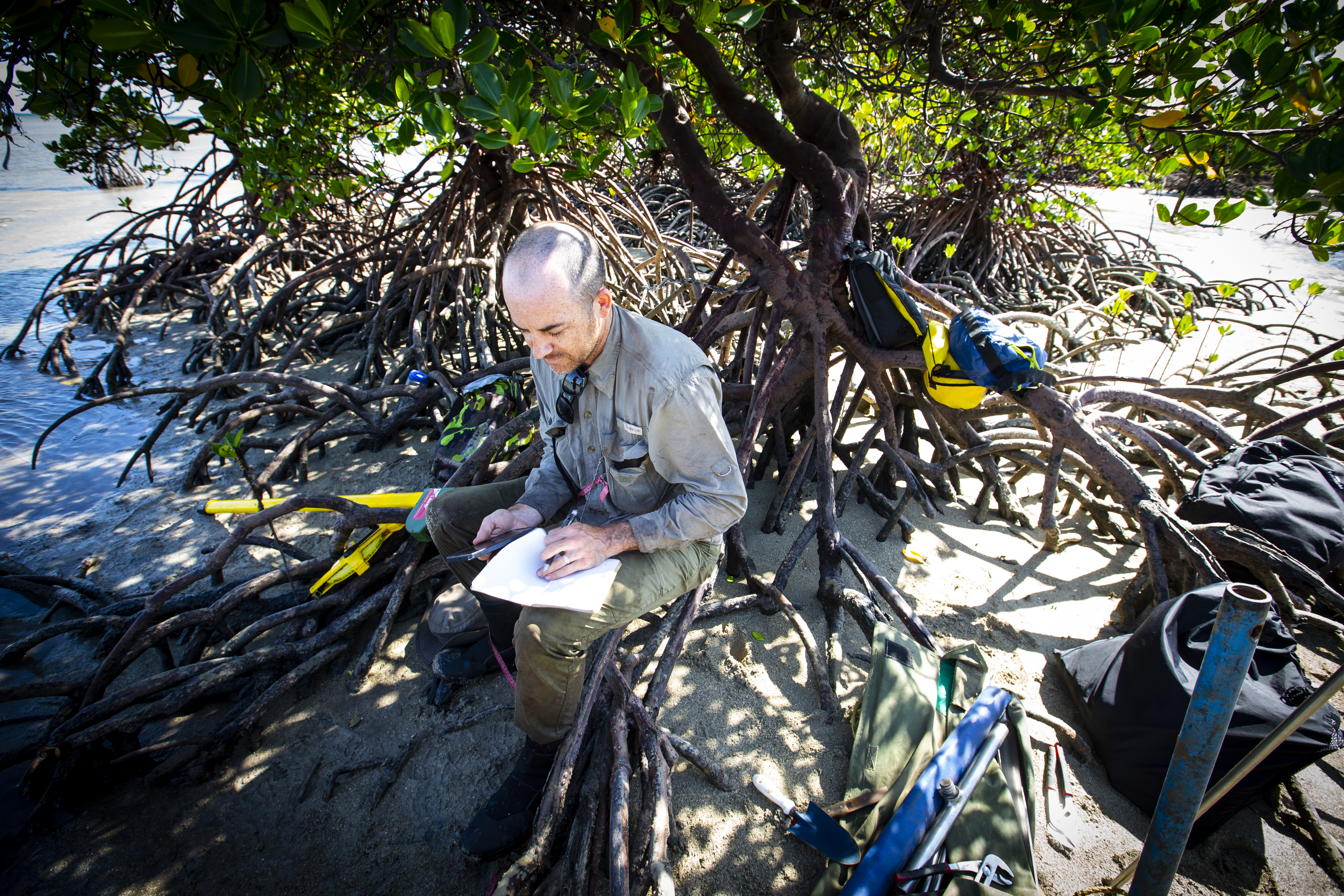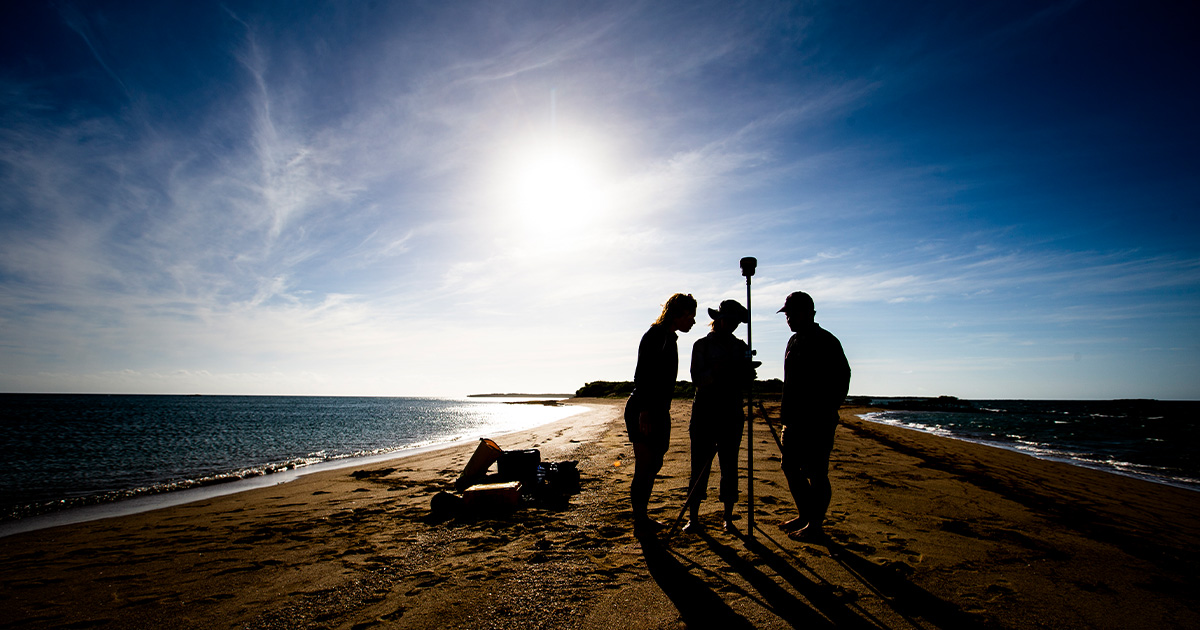A group of researchers from the University of Wollongong’s (UOW) School of Earth, Atmospheric and Life Sciences (SEALS) have published a paper in Proceedings of the Royal Society B that shows how the mangroves of the Great Barrier Reef are adapting to climate change.
The paper, “Mangrove expansion on the low wooded islands of the Great Barrier Reef”, looked at a small group of islands off the coast of northern Queensland, the Howick Group, which have been studied for almost 100 years. The team, led by Associate Professor Sarah Hamylton, measured a particular species of mangrove forest called Rhizophora stylosa and found expansion of more than 10,000 tonnes of carbon biomass since the 1970s.
Tropical mangroves are a vitally important part of coastal ecosystems—they provide homes for birds, breeding grounds for turtles, and serve as nurseries for fish. Mangroves act as a natural shield during storms and cyclones, protecting coastlines and islands. And importantly for climate impacts, they provide blue carbon capture - where the sediments build soil, capturing carbon dioxide from the atmosphere and sequestering it in their root systems.
Dr. Jeff Kelleway, co-author of the study, has been researching mangrove habitats for more than 15 years.
“Coastal wetlands are the sentinels of climate change impact, some of the first places where we see changing climate and sea-level rise, but they're also incredibly important ecosystems in what they provide to us, in terms of habitat but also carbon sequestration. They can help us in the fight against climate change by drawing carbon out of the atmosphere.
“The mangroves we studied in the remote islands off the coast of northern Australia are growing. They’re expanding on to reef flats where historically we haven't seen mangroves occur to such an extent before. This has implications and flow on effects for each of the services mangroves provide to us and to other parts of the coastal environment.”
 (Image credit: UOW)
(Image credit: UOW)
With the changing climate and rising sea levels it is crucial to understand how mangroves adapt and change, especially in an ecosystem as vital as the Great Barrier Reef.
The findings demonstrate the globally dynamic rates of expansion and biomass increase in a relatively underexplored reef environment.
“This is a good news story in the context of the Great Barrier Reef, at a time when the reef is facing other climate challenges such as widespread coral bleaching events,” Dr. Kelleway said.
“The Howick Group are only small islands, but the mangrove forests there are rapidly expanding.”
The team will continue to unravel why these mangrove forests are expanding with ongoing, targeted work at Low Isles.
“We’ve seen that the expansion in other settings is mostly due to sea-level rising and mangroves moving up slope into new habitats. But what we observed in this paper is that that expansion isn't always upslope. Sometimes it's more of a seaward expansion and that's something we’re really keen to try and understand,” Dr. Kelleway said.
 (Image credit: UOW)
(Image credit: UOW)
With mangrove forest being the dominant vegetation growing on low wooded islands in the Caribbean, Indian and Pacific Oceans, the findings have implications across the globe.
“We need better consideration of the impacts of climate change and the nuances across different ecosystem types around the country and around the world. It’s quite important having this setting in Australia because it allows us to understand a little bit more about the global picture of mangroves and how they’re responding to climate change.”



